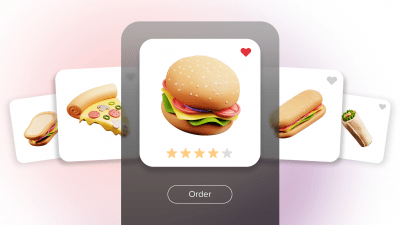Last Updated on: 23rd September 2024, 08:44 am
Sports are obsessed with precision measurements. Sprint times are measured to the hundredth of a second; Formula One lap times go down to the thousandth. In soccer, we now have stats for every player’s pass completion, goal contributions, distance run per game, and everything else imaginable. And it’s not just professionals. Amateur athletes and casual fitness enthusiasts track every kilometer they run, average times, altitude, and carbs burnt.
It makes sense that sports brands are leaning into the data that people generate. The first valuable source of data is online browsing information. However, sports brands are looking into ways to leverage other information that users are willing to share if they believe it will improve their performance.
Play-by-play:
- Customer data in sports digital marketing is immensely valuable. So, offer value in return.
- Take advantage of the increasing appetite for personalization.
- Score with the right type of messaging.
- Be future-ready with Deep Learning.
- Faster, higher, stronger—test, iterate, and refine.
Customer data in sports digital marketing is immensely valuable. So, offer value in return
As we move into a cross-connected future, we don’t just think about data as zeros and ones. It is whatever customers are willing to tell us about themselves, which we can use to improve their experiences. Sports digital marketing has a distinct advantage here, as people are already generating so many touchpoints. Users will share data if they think it gives them that advantage, even if it is just a hundredth of a second.
Wearables and sports apps have become a strong link between brands and individual users. In fact, in late 2023, Fitbit was the second most popular smartwatch in the United States (only after the Apple Watch). When people share their performance data, companies can make more tailored recommendations. For example, if an app shows that the runner spends 70% of their time in the forest, then recommendations for trail running shoes instead of sleek-soled road shoes are a win-win. The customer gets a better product and improved performance and is less likely to twist their ankle. And the brand gets to start a long-term relationship with that user, which is vitally important as the online sports digital marketing landscape becomes more competitive.
Take advantage of the increasing appetite for personalization
Recent research shows that users are prepared to share their data if it results in them receiving personalized experiences in return—messaging that aligns with their interests, location, and lifestyle. The same research shows a decline in ad-blocker usage and a more positive perception towards tailored and relevant advertisements, with an 11 percentage point drop from 47% to 36% of people who are “often annoyed by advertising on the internet” from 2019 to 2023.
This strongly hints at consumers not only becoming more accepting of bespoke content but hungering for it. It’s a significant motive for sports brands to design personalized experiences that are a great trade-off for users allowing their data to be leveraged in this way. Read more on how to better calibrate your ecommerce retargeting strategy here.
Score with the right type of messaging
This doesn’t mean that brands don’t need to continue to respect user privacy—there is so much freely given data that there is no need to cross any boundaries. In fact, brands can look for new and engaging ways to gain more data from willing customers.
Interactive ads are one such opportunity to create personalized recommendations through voluntarily given data. Let’s say that the brand has identified a potential customer as a keen runner. An interactive banner might ask questions like, “What part of you gets colder while running in winter?” and have ears, fingers, or calves as the answers. Depending on what the user clicks, they might be shown a headband, gloves, or knee-high sports socks. This, of course, powerfully feeds into leveraging those all-important seasonal promotions in sports digital marketing.
Be future-ready with Deep Learning
There is a good reason why RTB House is the first retargeting provider to deploy Deep Learning across 100% of its solutions. It is the most powerful and efficient form of AI in sports digital marketing and beyond. The Deep Learning algorithms that underpin our solutions are incredibly adaptable to any unique user, placement, and moment in time—you get more sophisticated personalization, increased revenue, and better ROAS.
And Deep Learning is the best choice to future-proof your marketing stack. It’s set to be the most powerful tool in the cookieless era. In fact, we are well ahead of the industry curve, having developed, alongside Google, advanced marketing solutions that ensure ad addressability and great results.
Faster, higher, stronger—test, iterate, and refine
Athletes are constantly looking to gain an advantage over the competition. The digital era has brought with it the ability to test, iterate, and refine athletic performance. So too, for online marketing for sports brands. Hyper-personalized ads, powered by Deep Learning, can be your advantage.
Reach out to us for faster, higher, and stronger online campaigns at: https://www.rtbhouse.com/offer/for-industries/sports





